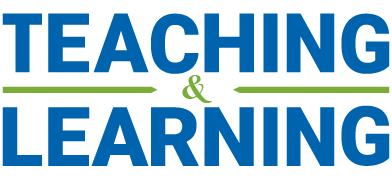By Jordan Crocker, Schulich Student Online Course Design Consultant.
Jordan is an MBA/JD Student at Osgoode Hall Law School and the Schulich School of Business. He holds an MA from Queen’s University and a BA from the University of Victoria, both in History. During his post-secondary studies, Jordan has held numerous leadership positions and has worked as a Policy Advisor and Teaching Assistant.

Focusing on the Material
Re-creating the classroom virtually has its challenges. Distractions from the environment around us, as well as keeping retention and engagement in a classroom high will be chief among these challenges in the coming term(s).
Before COVID-19, managing class material was significantly easier. Moving to an online/remote format however has meant uploading more materials online to supplement synchronous class time. It is well known now that keeping lectures short in order to sustain participation and to maximize students retaining what they have learned in cyberspace is a best practice. While uploading more content online can create flexibility for students in terms of allowing them to progress through the course on their own schedules, part of the challenge is that students may not engage with these materials. Alternatively, they may be overzealous and begin rushing ahead in the course, trying to understand concepts they are perhaps not yet equipped to deal with. The consequences of either of these scenarios is that it not only impacts their learning experiences, but it also proves distracting to other students in the online/remote classroom. On the one hand, if some students are asking questions unrelated to the weeks’ material, there can be confusion for the rest of the class about the content of the course and concern over not being as far ahead as others. On the other hand, it is also detrimental to the collective learning of the class if students do not engage with any of the supplementary material because insights could be missed and experiences during a classroom discussion will not be brought forward, leaving all students lesser in their knowledge. The answer of how best to manage these concerns is pacing and maximizing accessible content.
Pacing Course Content
Pacing course content can be done in Canvas by choosing the date that student will be able to access future modules / weeks at the start of the course. An instructor simply needs to edit the module settings, select the “lock until” box and add an unlock date.
Pacing course content can also be done on Canvas by blocking off items within future modules / weeks and opening them up throughout the duration of the course. See the following example on how to publish / unpublish items:
A green check mark means an item has been published and is visible to students.
Selecting a green check mark turns it into an unpublished item which is invisible to students.
In practice, this would look like having all the weeks of the course and their topics visible to students but would leave supplementary material hidden until after the previous lecture has completed so as to manage students’ pacing and learning throughout the course. Pacing the course also allows for less anxiety on the part of students, as it is overwhelming to see all the supplementary materials and lectures which will be part of the course during Week 1. Previously, instructors could have everything on Canvas at the beginning of the course and they did not need to be as wary of overwhelming students because of the in-person components. Now, in confined environments with fewer opportunities to engage with friends and instructors at Schulich, managing students’ pacing will be increasingly important.
Manageable Modules
Besides controlling the pacing of the course content, sorting classes by quick topics which are easily retained and completed can help students manage their learning online and enable them to be more productive. By breaking up classes into more manageable doses, such as into specific topics / recordings, the modules allow for students to feel accomplished by completing various small tasks and minimize anxiety. Instead of seeing a long list of tasks, students will be able to engage with the same amount of content but will be less overwhelmed and more likely to do the work. Furthermore, and if possible, introducing modules and topics by way of a video, such as through Zoom or Echo360, or even through ‘mini assessments’ on Canvas, can help students get familiar with the expectations for the week which would reduce ambiguity and increase participation and engagement.
Overall
The virtual classroom presents many new challenges to previous best pedagogical practices. Distractions and anxieties will flourish in this new learning environment, but only if students feel overwhelmed. Pacing course materials as well as breaking up lectures into manageable modules will better manage students’ anxieties and ultimately lead to better learning experience in the online environment as students will be more engaged and productive.
To work directly with one of Schulich’s Student Online Course Design Consultants or Developers, contact ada@schulich.yorku.ca.






